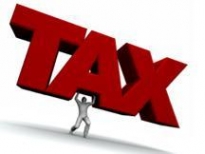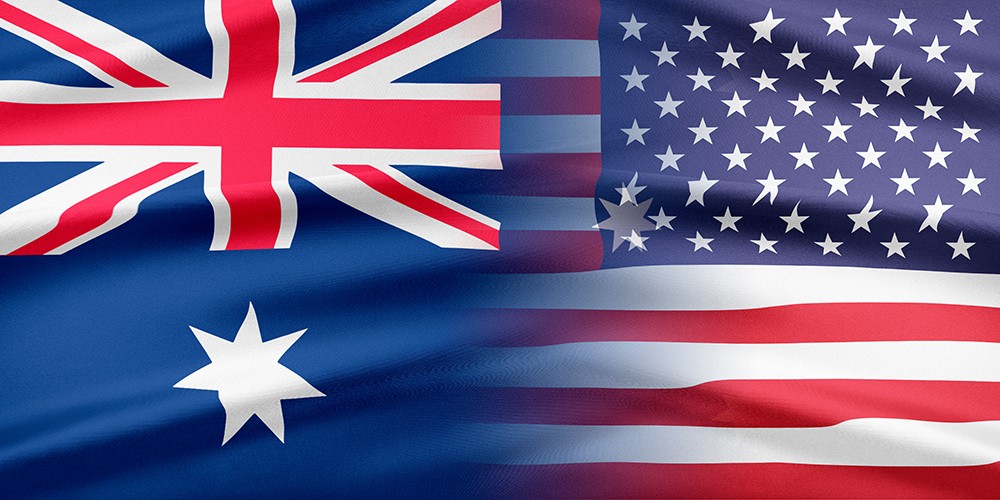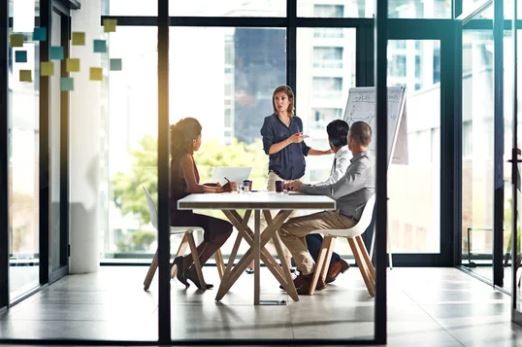2010 Budget Highlights
Personal Taxation
The Government will deliver its third tranche of personal income tax cuts that were promised in the 2007 election campaign.
 Personal tax rates - the threshold for the 30% marginal tax rate will be increased by $2,000 to $37,001 and the 38% marginal tax rate will be reduced to 37%. • Low Income Tax Offset (LITO) will be increased to $1,500 (currently $1,350) for incomes up to $67,500 (currently $63,750) from 1 July 2010 and will begin to phase out from $30,000. Taxpayers eligible for the full low income tax offset will not pay tax until their annual income is over $16,000 (up from the current $15,000).
Personal tax rates - the threshold for the 30% marginal tax rate will be increased by $2,000 to $37,001 and the 38% marginal tax rate will be reduced to 37%. • Low Income Tax Offset (LITO) will be increased to $1,500 (currently $1,350) for incomes up to $67,500 (currently $63,750) from 1 July 2010 and will begin to phase out from $30,000. Taxpayers eligible for the full low income tax offset will not pay tax until their annual income is over $16,000 (up from the current $15,000).- In a bid to simplify the current personal income tax return system the Government will from July 1, 2012 provide workers with an optional standard tax deduction of $500 instead of having taxpayers detail their work-related expenses in their tax return. This standard tax deduction will increase to $1,000 from July 1, 2013. Taxpayers with deductible expenses greater than the standard threshold will still be able to itemize and claim their higher expenses in lieu of the standard deduction.
- From 1 July 2011, individuals will be eligible for a 50% tax discount on up to $1,000 of interest earned. This includes interest earned on deposits held with any bank, building society or credit union as well as on bonds, debentures or annuity products. The discount will be available for interest income earned directly as well as indirectly, such as via a trust or a managed investment scheme (MIS).
- The net medical expenses tax offset threshold will increase to $2,000 (currently $1,500) from 1 July 2010 and will be indexed annually (from 1 July 2011) to reflect the movements in CPI in subsequent years. Taxpayers can only claim the 20% tax offset for net unreimbursed eligible medical expenses that exceed the threshold for the relevant year.
- The childcare rebate cap per child has been reduced to $7,500 (currently $7,778) and indexation of the cap has been frozen for four years from 1 July 2010.
| Income Tax Thresholds |
|||
| 2010/11 Tax Thresholds |
Tax Rate (%) |
2009/10 Tax Thresholds | Tax Rate (%) |
| $0 - $6000 | 0 | $0 - $6000 | 0 |
| $6001 - $37,000 | 15 | $6001 - $35,000 |
15 |
| $37,001 - $80,000 | 30 |
$35,001 - $80,000 |
30 |
| $80,001 - $180,000 |
37 |
$80,001 - $180,000 |
38 |
| $180,001 + |
45 |
$180,001 + |
45 |
Social Security & Medicare Levy
- With effect from 1 July 2009, the Medicare levy low-income thresholds are $18,488 for individuals and $31,196 for couples. The thresholds will increase by an additional amount of $2,865 for each dependent child or student.
- For pensioners below the Age Pension age, the Medicare levy threshold has increased to $27,697 with effect from 1 July 2009. This increase will ensure that pensioners below Age Pension age do not pay the Medicare levy when they do not have an income tax liability.
- The Government has proposed stricter eligibility requirements for Family Tax Benefit - Part A (FTB-A) where they have children aged 16 to 20 who have not completed year 12 or an equivalent qualification. To remain eligible for FTB-A, it is now proposed that the children in these cases must participate in full-time education or training. This proposal removes the option of allowing the children to participate in part-time education or training in combination with other approved activities, leading to year 12 or an equivalent qualification.
Business Taxation
Reduction In Company Tax Rate - The Government has proposed to reduce the current company tax rate of 30% to 29% for the 2014 income tax year and 28% from the 2015 income tax year. Small businesses will be eligible for the 28% rate from 1 July, 2012, two years earlier than larger companies. This is the first rate reduction since 2001 and the change will benefit an estimated 720,000 small businesses who operate as company (out of the total 2.7 million small business entities). The Government will not make any changes to the dividend imputation system.
Asset Write Offs - It is proposed that from 1 July, 2012 small businesses will benefit from the immediate write off of assets purchased that cost less than $5,000. Currently, assets costing less than $1000 are eligible for an immediate tax deduction while assets costing over $1000 are written off at two different rates depending on their estimated useful life.
Along with changes to the depreciation rules, the depreciation of all other assets (excluding buildings) will be ‘pooled’ or grouped at a simpler 30% rate to accelerate the tax write off. In their first year of purchase the rate will be 15 per cent. The Government has not issued guidelines regarding what entities would qualify as ‘small business entities’ but currently a small business is generally one which has an aggregated annual turnover of less than $2 million.
Resources Super Profits Tax - The centerpiece of the Government’s first wave of tax reform in response to the Henry Review is the introduction of a ‘Resources Super Profits Tax’ (RSPT) on petroleum and mining projects from 1 July 2012 . The RSPT will replace the crude oil excise and operate in parallel with existing State and Territory royalty regimes. The proposed RSPT will be payable at 40% on the realized value of resource deposits, measured as the difference between the revenue generated from resource extraction and the associated costs. The RSPT is the funding vehicle for other announced reforms and the Government need to overcome some major political hurdles before the reforms become reality.
Business Names Register - The Government will spend $125.2 million over the next eight years to create a single national online registration system for business names and Australian Business Numbers, meaning businesses will no longer need to be registered in each State and Territory.
Hire Purchase & GST - Small businesses that account for GST on a cash basis will from 1 July 2012 be allowed to claim the upfront GST input tax credit in relation to hire purchase agreements.
Superannuation
The Government has announced that superannuation guarantee (SG) payments made on behalf of employees (currently 9%) will progressively increase to 12% by the year ending 30th June, 2020. The delayed and staggered increases are designed to give employers time to factor the increases into wage negotiations.
| Financial Year Ended |
Superannuation Guarantee Rate |
| 30 June 2014 |
9.25% |
| 30 June 2015 | 9.50% |
| 30 June 2016 | 10.0% |
| 30 June 2017 | 10.5% |
| 30 June 2018 | 11.0% |
| 30 June 2019 | 11.5% |
| 30 June 2020 | 12.0% |
It is expected that about 8.4 million employees will benefit from these measures and according to the Government, a 30 year old earning average full time wages will have an additional $108,000 in retirement savings. Note that it is not clear what assumptions (earning rates etc.) this projection is based on.
- The employee age limit for superannuation guarantee payments will increase from the current age of 70 years to 75. Around 33,000 employees are expected to benefit from the change and this measure will bring it in line with those self-employed people who can make deductible contributions until they turn 75. The commencement date of 1 July, 2013 coincides with the initial increase in the rate of SG.
- For workers earning less than $37,000 per annum, the Government will also make a contribution of 15% of the concessional contributions made on their behalf, up to a $500 limit. In effect, the tax on the superannuation contributions for these workers (currently 15%) would be nil. These changes will come into effect from 1 July, 2012.
- For people over 50 years of age with superannuation balances of less than $500,000, the Government has also increased the amount of deductible superannuation contributions they can make from $25,000 to $50,000 per annum. These measures are designed to increase the superannuation savings of Australians and it is also a major step forward in assisting lower income earners with their retirement savings.
- The Government has announced that it will seek to permanently set the matching rate for the superannuation co-contribution at 100%. The maximum co-contribution that is payable on an individual’s eligible personal non-concessional superannuation contributions is $1,000. As a result, the previously legislated increase in the matching rate to 125% for the 2012/13 and 2013/14 years (and to 150% for 2014/15 and later years) will not proceed.
- The Government says that for 2010/11 and 2011/12 it will freeze the indexation applied on the income threshold above which the maximum superannuation co-contribution begins to phase down. Under the superannuation co-contribution scheme, the Government currently provides a matching contribution for contributions made into superannuation out of after tax income. The matching contribution is up to $1,000 for individuals with incomes of up to $31,920 in 2009/10 (with the amount available phasing down for incomes up to $61,920). The new measure will freeze these thresholds at $31,920 and $61,920 for two years.
The Government says this measure follows its earlier announcement in response to the Henry Tax, proposing a $500 annual superannuation contribution for individuals with an adjusted taxable income up to $37,000.
| IMPORTANT DISCLAIMER: This article is published as a guide to clients and for their private information. This article does not constitute advice. Clients should not act solely on the basis of the material contained in this article. Items herein are general comments only and do not convey advice per se. Also changes in legislation may occur quickly. We therefore recommend that our formal advice be sought before acting in any of these areas. |














